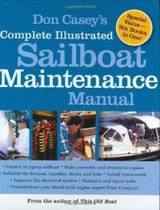Just back from the Boat Show – which was brilliant!
Amidst all the boat and gear ogling, we also managed to attend 2 (free!) lectures, one of which was on ‘caring for diesel engines for cruisers’ with Tony Brooks.
Tony is an instructor offering boaters’ courses and technical help. His site with some good technical notes on it can be found here.
He only had 20 minutes to speak but had great handouts and parts on hand to illustrate his points.
Here are the highlights…
For a long lived and happy engine you need:
- a clean fuel system
- a clean oil system
- a clean air system
and
- regular maintenance prevents and pre-solves a lot of problems.
Okay. So far so good. Then came the meat of the talk…
Diesel bug
This is a pretty yucky bug that likes to live in your diesel fuel and turns it a burnt brown colour and lumpy (dead bugs). The solution previously appeared to be to add emulsifier to the fuel.
Unfortunately, this emulsifier caused a new problem – a waxy-like, light coloured fuel which blocks up the filter. Not good.
To get rid of diesel bug, you should:
- stop using emulsifier
- treat your tank by adding a de-emulsifier with a biocide included in it (eg Marine 16 or Grotamar)
- let it stand to give the de-emulsifier with biocide time to do its job
- pump out the cloudy opaque fuel from the bottom of your tank
- then keep using the Marine 16 or Grotamar regularly
Listening to this lecture highlighted that… we don’t know a thing about engines yet.
Even the Can Opener was motivated to jump to the engine section in our Don Casey’s Sailboat Maintenance Manual.
We’re also going to take the RYA Diesel course earlier than planned. As the wise bloke at the Boat Show’s Cruising Association stand said, being able to troubleshoot an engine will make us more appealing as crew. So bring it on.
Have you ever gotten diesel bug in your fuel?
What did you do?
–Captain Cat
(transcribed by the Can Opener)
Cruising Lectures
Next: Battery Capacity
Previously: Stay Alive – How to Cross Shipping Lanes






